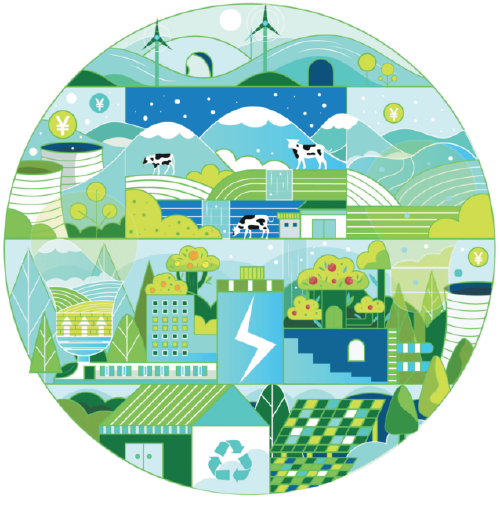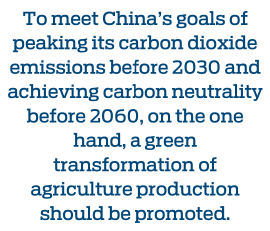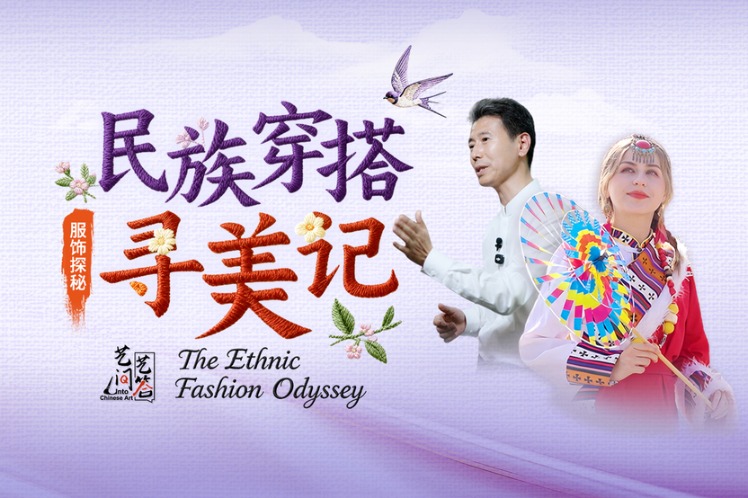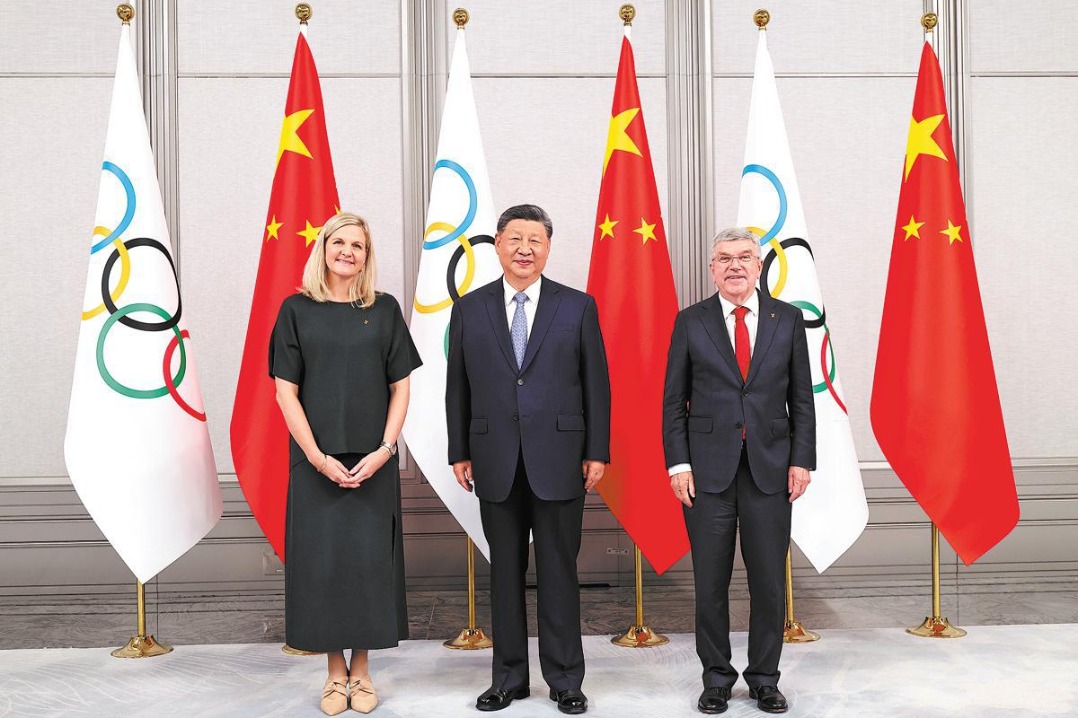Green unity
China must strengthen international cooperation in agri-science and technology to reduce carbon emissions in the production process

China must strengthen international cooperation in agri-science and technology to reduce carbon emissions in the production process

China's grain production has been on the rise. The annual grain output remained stable at over 650 million metric tons over the past eight years and reached 687 million metric tons in 2022, a record high. However, as the economy grows and there is greater urbanization, increasing agricultural production to meet the rising demands for grain and important agricultural sideline products remains a challenging task.
In addition, the agricultural sector also contributes to global warming. Farming, using fertilizers in farmland and breeding livestock generate greenhouse gasses. According to studies, greenhouse gas emissions from agriculture, which mainly come from plantations, animal husbandry and waste treatment, account for 7-15 percent of China's total greenhouse gas emissions.
With a large population, relatively small area of arable land, and scarce water resources, China has been relying on massive investment of resources and heavy use of fertilizers and water to increase crop yield and speed of harvest, which has resulted in serious environmental problems such as soil compaction, soil degradation and pollution from pesticides and fertilizers. Such production methods are no longer sustainable.
To meet China's goals of peaking its carbon dioxide emissions before 2030 and achieving carbon neutrality before 2060, on the one hand, a green transformation of agriculture production should be promoted. Instead of pursuing high yields, we should strive to achieve stable production and supply while reducing greenhouse gas emissions.
On the other hand, we need to tap into the "green" nature of agriculture, an important component of the ecosystem. Rice fields, vegetable farms and orchards are green spaces and wetlands, which can provide carbon sequestration and carbon sink functions.
By combining the economic value of agricultural products with the ecological value of agriculture and rural areas, China can achieve sustainable and high-quality development of its economy and society.
To achieve stable and increased agricultural production under the carbon peaking and carbon neutrality goals, China must adopt measures to encourage carbon reduction in the production process, promote green and efficient circulation, and reduce food wastage at the consumption end.
At the same time, the government needs to motivate agricultural production entities to go for green development and integrate national food security with green and low-carbon transformation.
In fact, a carbon reduction pressure transmission mechanism is forming in the agricultural industry chain, where agricultural companies usually play a leading role, connecting smallholders and large markets. For companies, the pressure to reduce carbon emissions comes not only from macro policies but also from upstream and downstream enterprises in the industrial chain.
Currently, more and more companies are starting to disclose their environmental information to the public.
According to data from the Carbon Disclosure Project, a global environmental information research center, the number of Chinese companies that submit relevant environment information to it exceeded 1,300 in 2020. And 11 companies received A or A — ratings from the center, which is the best level in history. Also, in China's A-share stock bourse, the number of companies that publish environmental social and governance-related reports increased from 872 in 2018 to 1,130 in 2021.
Downstream companies that disclose their environmental information will inevitably demand upstream suppliers to meet green standards in areas such as their agricultural products' planting environment, transportation process and packaging. This pressure will transmit along agribusinesses in the industry chain.
For example, Yili Group is one of the top five dairy producers in the world, and 90 percent of Yili Group's carbon emissions come from its activities throughout the supply chain, such as raw material procurement, packaging, and logistics. Yili is currently working on sorting out emission sources and exploring the best method for carbon emissions calculation.
The downstream enterprises' demands for green attributes for their products will be transmitted to small-scale agricultural production entities at the front end of the industry chain.
The government needs to pay attention to this transmission mechanism and give good guidance and effective measures to cultivate its development.
First, to build a whole-process monitoring system to safeguard food supply while reducing carbon generation in agriculture, information on the process of agricultural production, circulation, consumption, environmental protection, and carbon reduction needs to be gathered and monitored using big data technology.
Second, green agricultural taxation and insurance policies need to be improved, so as to support and encourage green agricultural investment. For example, policies such as giving companies tax breaks for the production of green and low-carbon agricultural goods or tax deductions for the purchase of low-carbon equipment can be introduced. Also, insurance companies can be encouraged to play a greater role in responding to the risk management needs of agricultural companies in their green transformation.
Third, there should be an agricultural carbon sequestration compensation mechanism to provide economic incentives for agricultural entities. By designing scientific measurement and calculation standards for agricultural carbon sequestration, as well as formulating compensation principles, special subsidies can be issued and the carbon market can incentivize the transformation to green agriculture.
Finally, China should strengthen international cooperation in agricultural science and technology and carbon reduction while sharing China's good practices and technologies. At the same time, we need to attract global talents in carbon reduction, create more international cooperation, innovation and sharing platforms, and improve the mechanisms for exchanges, cooperation, and sharing of international green agricultural technologies.

The author is the director of Circulation and Industrial Development at the Macroeconomic Research Department and a senior economist with the China Center for International Economic Exchanges. The author contributed this article to China Watch, a think tank powered by China Daily.
Contact the editor at editor@chinawatch.cn
































